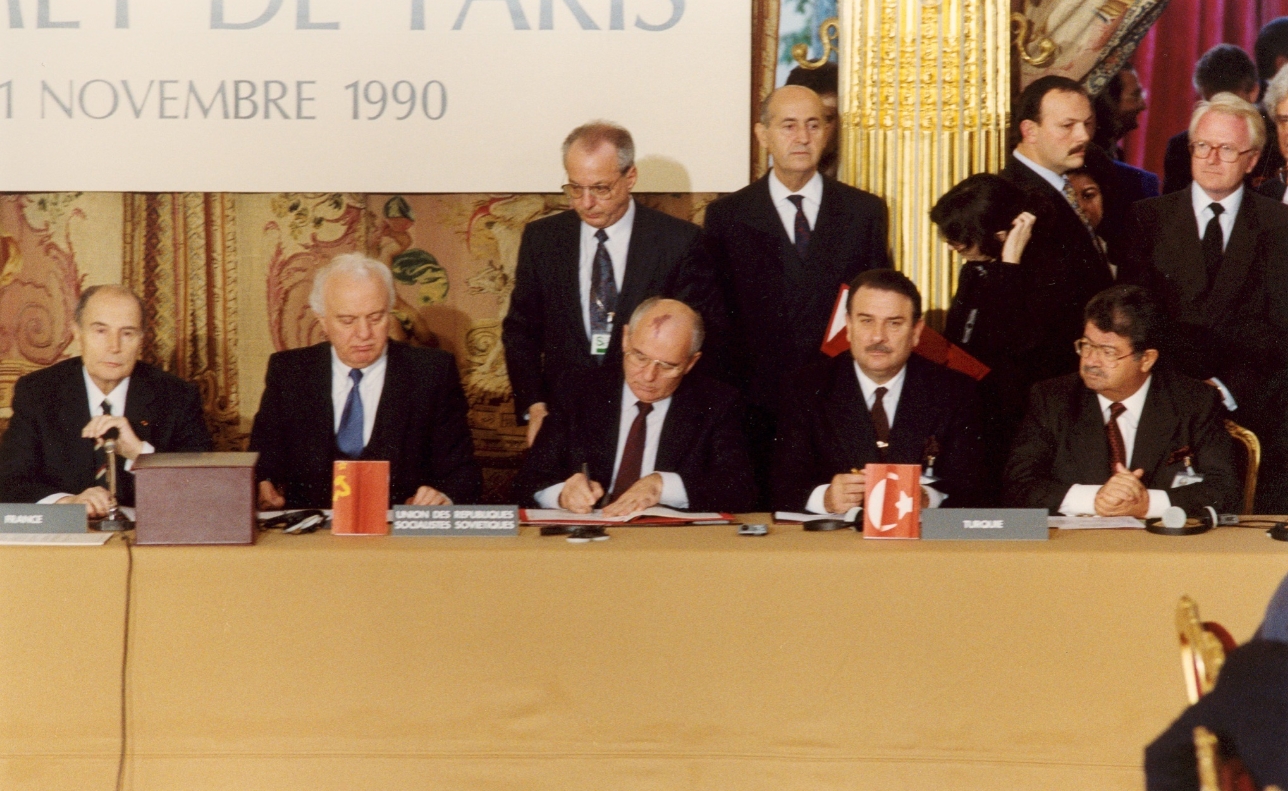Lukashenko withdraws Belarus from the Treaty on Conventional Armed Forces in Europe
29 May, 2024 Iskander-M of the Belarusian military, which is capable of using nuclear warheads. August 2023. Belarus.
Photo credits: Ministry of Defense of Belarus Alexander Lukashenko signed a law suspending the Treaty on Conventional Armed Forces in Europe for Belarus. The document was published on Wednesday on the National Legal Portal of Belarus.
"To suspend the Treaty on Conventional Armed Forces in Europe of November 19, 1990," the law states. This treaty was ratified by Belarus and entered into force in 1992. It provides for limits on aggregate levels of conventional weapons and equipment in five main categories (tanks, armored combat vehicles, artillery, attack helicopters, and combat aircraft), as well as mechanisms for verifying compliance with the commitments (information exchange and inspections).
 The President of the USSR, Mikhail Gorbachev, signs the Treaty on Conventional Armed Forces in Europe. November 1990. Photo credits: @diplohistory
The President of the USSR, Mikhail Gorbachev, signs the Treaty on Conventional Armed Forces in Europe. November 1990. Photo credits: @diplohistory
Lukashenko's press service noted that the suspension of the Treaty on Conventional Armed Forces in Europe does not mean that Belarus will withdraw from it and stop implementing internal procedures related to its implementation in the armed forces.
As reported, the Czech Republic and Poland decided not to fulfill the agreement on Belarus in August 2022 and March 2023, respectively. In response, Alexander Lukashenko signed a law terminating the Treaty on Conventional Armed Forces in Europe with respect to Poland and the Czech Republic. On November 7, 2023, Russia finally withdrew from yet another international arms limitation agreement, this time saying goodbye to the Treaty on Conventional Armed Forces in Europe.
In response, NATO member states announced their intention to suspend the Treaty "for as long as necessary". The Treaty on Conventional Armed Forces in Europe concluded in the last years of the Cold War, set limits on key categories of conventional military equipment in Europe (from the Atlantic to the Urals) and provided for the destruction of surplus weapons. The treaty offered equal restrictions for two groups of states: NATO members and the Warsaw Pact.
As previously reported, a military base is under construction in Belarus, where Russia may store its nuclear weapons.